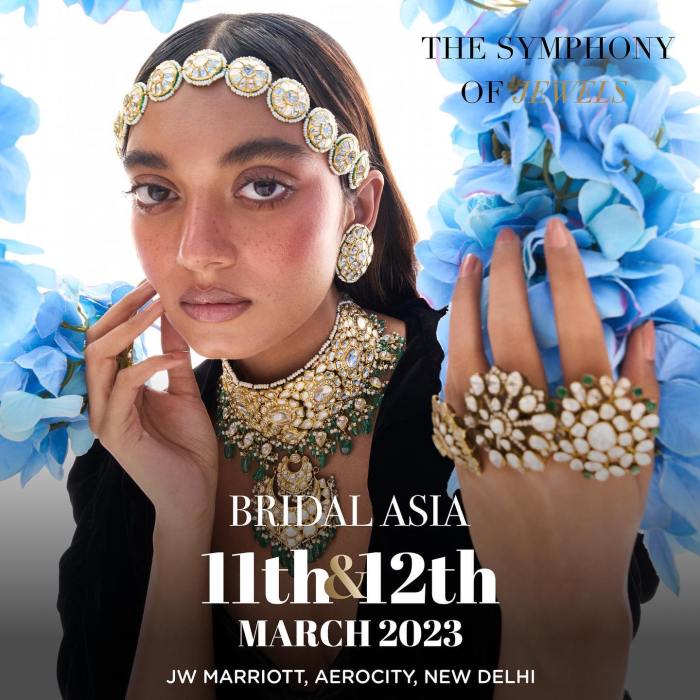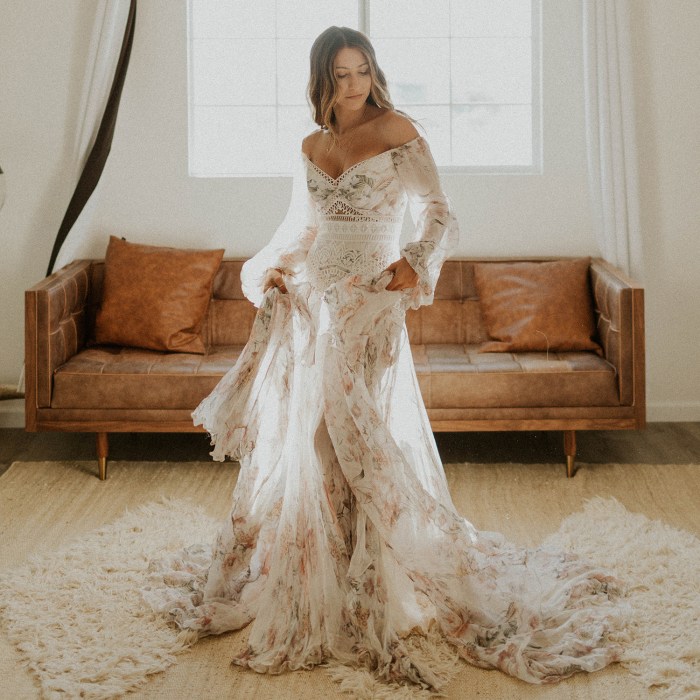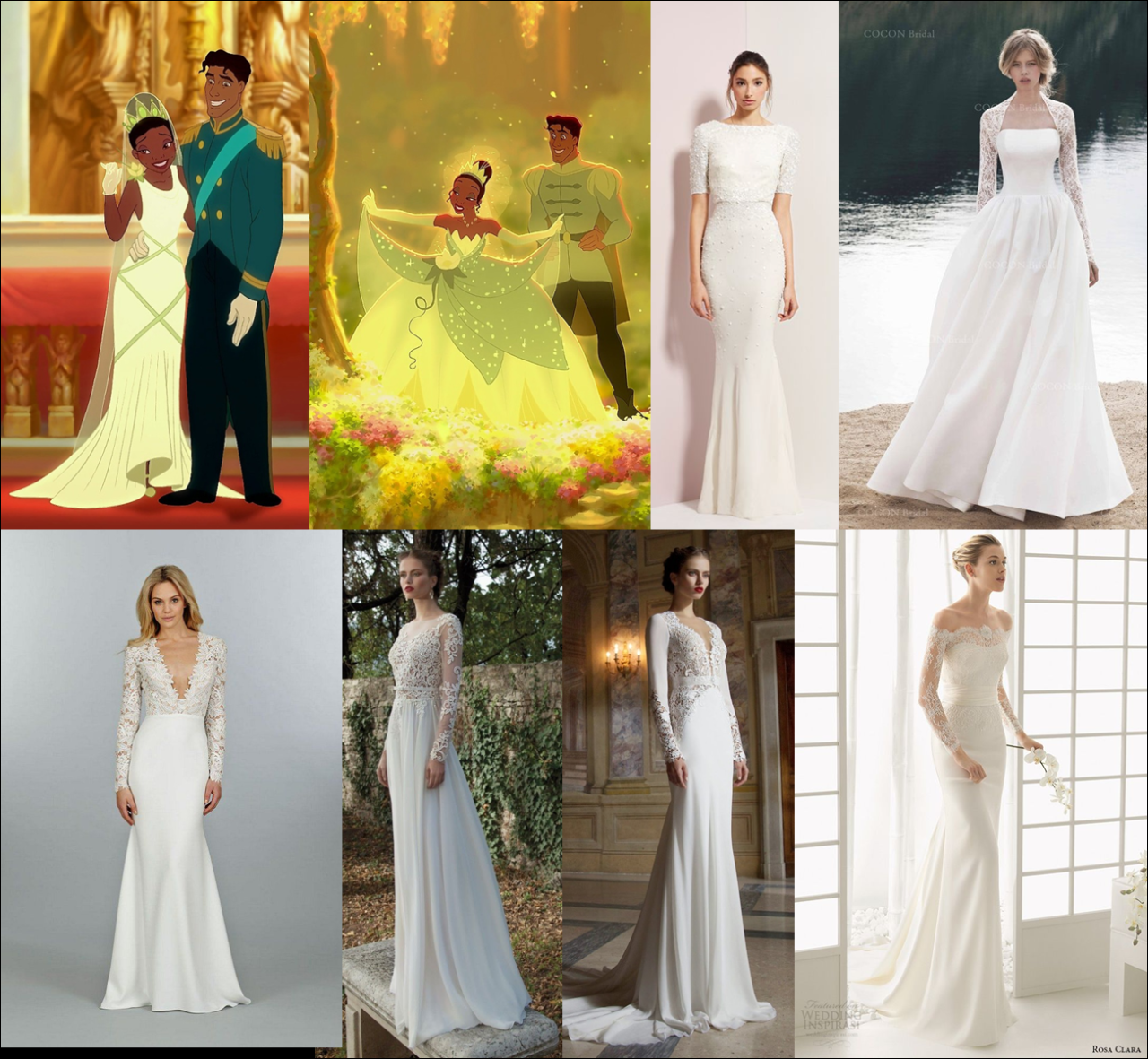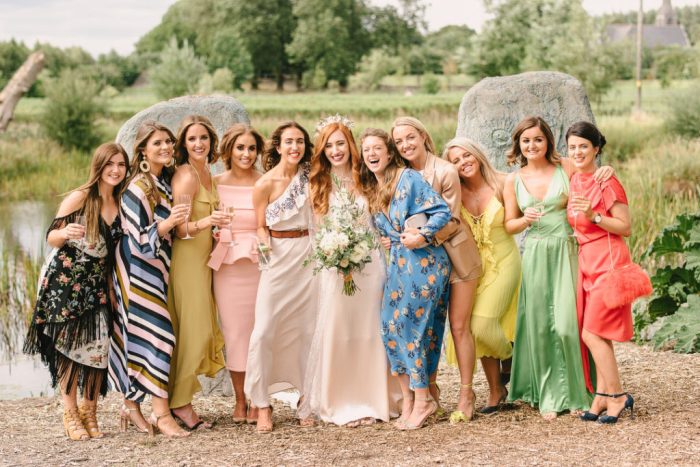Styles and Trends in Asian Bridal Wedding Dresses
Asian bridal wedding dresses – Asian bridal fashion is a vibrant tapestry woven from centuries of tradition and evolving modern aesthetics. Over the past fifty years, we’ve witnessed a fascinating interplay between preserving cultural heritage and embracing contemporary design elements. This evolution is reflected in the diverse styles and trends seen across various Asian countries.
Evolution of Asian Bridal Wear
The past 50 years have seen a significant shift in Asian bridal wear. Traditional styles, often characterized by elaborate embroidery, rich fabrics, and symbolic colors, have been gradually adapted to incorporate modern silhouettes and design details. For example, the traditional Chinese qipao, once primarily worn with long sleeves and high collars, now features shorter lengths, sleeveless designs, and a variety of necklines.
Similarly, Indian bridal sarees, while retaining their inherent elegance, now showcase a wider array of fabrics, embellishments, and color palettes.
Traditional vs. Modern Interpretations
Traditional Asian bridal dresses often emphasize symbolism and cultural significance. Fabrics, colors, and embellishments all hold deep meaning, reflecting the bride’s family heritage and marital status. Modern interpretations retain these symbolic elements but often incorporate more contemporary silhouettes and design details. The emphasis might shift from sheer volume and elaborate embroidery to streamlined elegance and minimalist aesthetics while still respecting the core cultural identity.
Key Design Elements in Different Asian Bridal Styles
Each Asian country boasts unique bridal styles. Chinese wedding dresses, for instance, often feature red, the color of prosperity and good fortune, and intricate embroidery depicting auspicious symbols. Indian bridal wear is characterized by rich fabrics like silk and brocade, heavily embellished with zari work, and often incorporating vibrant colors and intricate patterns. Vietnamese áo dài, known for its graceful silhouette, typically uses silk in pastel shades.
Korean hanbok, with its vibrant colors and flowing lines, often incorporates traditional patterns and intricate details.
Common Fabrics Used in Asian Bridal Dresses, Asian bridal wedding dresses
| Country | Fabric | Texture | Common Color Palette |
|---|---|---|---|
| China | Silk, Satin, Brocade | Smooth, Lustrous, Rich | Red, Gold, Pink |
| India | Silk (Banarasi, Kanjeevaram), Brocade, Velvet | Smooth, Luxurious, Heavy | Red, Gold, Maroon, Pink, Green |
| Vietnam | Silk | Smooth, Flowing, Lightweight | Pastel shades, Ivory, Red |
| Korea | Silk, Satin, Chiffon | Smooth, Flowing, Lightweight | Vibrant colors, Pink, Red, Yellow |
Regional Variations in Asian Bridal Attire
The diversity of Asian bridal attire extends beyond national boundaries to encompass regional variations. These differences often reflect local traditions, craftsmanship, and the unique cultural identities of specific communities within a larger nation.
Cultural Significance of Garments and Embellishments
Many garments and embellishments hold deep cultural significance. For instance, the intricate embroidery on a Chinese wedding dress might depict phoenixes, symbolizing happiness and marital bliss, or lotuses, representing purity and spiritual enlightenment. In India, the color of the saree and the type of embroidery can vary significantly across different regions, each with its own unique cultural symbolism. The use of specific motifs and patterns can also indicate the bride’s family background and social status.
Symbolism of Colors, Patterns, and Materials
Colors play a crucial role in Asian bridal attire. Red, for example, is widely associated with good fortune and prosperity in many Asian cultures. Gold signifies wealth and royalty. Patterns and motifs, often drawn from nature or mythology, also carry symbolic meaning. The choice of materials also reflects the bride’s social standing and the opulence of the occasion.
Heavier fabrics, such as silk brocade, are often reserved for more formal occasions.
Regional Variations within a Single Country
Consider the diversity of Indian bridal wear. The style of saree, the type of embroidery, and the color palette can vary dramatically across different regions. A bride from South India might wear a Kanjeevaram silk saree, while a bride from North India might opt for a richly embroidered lehenga. These regional variations reflect the unique cultural heritage and traditions of each area.
Diversity of Asian Bridal Attire
To illustrate the diversity, consider three distinct styles: a traditional red Chinese qipao with intricate gold embroidery, a vibrant South Indian Kanjeevaram silk saree with gold zari work, and a sleek and modern Vietnamese áo dài in a pastel shade of pink. Each showcases a unique aesthetic, reflecting the rich cultural heritage of its origin.
Asian bridal wedding dresses offer a stunning array of styles, from traditional qipaos to modern interpretations. For those seeking a destination wedding, the options expand even further; consider the breathtaking backdrops available when you browse options for wedding dresses Maui Hawaii. The relaxed island vibe can beautifully complement the elegance of many Asian bridal styles, creating a truly unforgettable event.
Ultimately, the perfect dress reflects your personal style, whether it’s a classic silhouette or a more contemporary design.
Modern Adaptations of Traditional Asian Bridal Dresses
Contemporary Asian bridal fashion demonstrates a fascinating blend of tradition and modernity. Designers are skillfully incorporating modern elements into traditional styles, resulting in unique and innovative designs that resonate with both modern sensibilities and cultural heritage.
Incorporating Modern Elements into Traditional Wear
Modern adaptations often involve incorporating contemporary silhouettes, such as A-line or mermaid gowns, into traditional designs. This allows for a more comfortable and contemporary feel while still retaining the cultural essence. The use of modern fabrics, such as lace or tulle, can also add a touch of contemporary elegance to traditional designs. Designers might also experiment with new embellishment techniques or incorporate modern color palettes.
Impact of Western Fashion Trends
Western fashion trends have undeniably influenced Asian bridal styles, leading to the adoption of elements like structured silhouettes, intricate lacework, and the incorporation of Western-inspired accessories. However, this influence is often subtly integrated, ensuring that the core cultural identity of the garment remains intact.
Modern Fabrics and Techniques
Modern fabrics, such as silk blends, organza, and chiffon, are increasingly used in Asian bridal wear, offering a wider range of textures and drape. Modern techniques, such as laser cutting and 3D printing, are also being explored to create unique and intricate embellishments. These advancements allow for greater creativity and customization, resulting in truly unique and personalized bridal ensembles.
Innovative Design Elements in Modern Asian Bridal Dresses

Source: asianbridallooks.com
- Asymmetrical necklines
- Modern color palettes with bold hues
- Combination of traditional and Western silhouettes
- Minimalist embellishments with clean lines
- Use of unconventional fabrics and textures
Accessories and Details in Asian Bridal Fashion
Accessories and details play a significant role in completing the overall look of an Asian bride. These elements not only add to the aesthetic appeal but also carry cultural significance, reflecting the bride’s heritage and the traditions of her wedding ceremony.
Significance of Traditional Jewelry and Accessories
Traditional jewelry holds deep cultural significance in many Asian wedding ceremonies. Elaborate necklaces, earrings, bangles, and other adornments are often passed down through generations, carrying family history and blessings. The type and style of jewelry can also indicate the bride’s social standing and the region she hails from.
Role of Hairstyles and Makeup
Hairstyles and makeup play a crucial role in complementing the bridal attire. Traditional hairstyles, often intricate and elaborate, are carefully chosen to match the style of the dress and the overall aesthetic. Makeup is usually applied to enhance the bride’s natural features while adhering to traditional styles and color palettes.
Unique Headpieces and Veils
Headpieces and veils are integral parts of many Asian bridal ensembles. Traditional headpieces, often adorned with intricate details and precious stones, add a touch of elegance and royalty. Veils, while less common in some Asian traditions, are increasingly incorporated into modern designs, adding a touch of Western elegance to the overall look.
Common Accessories and Their Cultural Relevance

Source: eventfaqs.com
- Jewelry: Necklaces, earrings, bangles, rings – often made of gold and precious stones, carrying symbolic meanings.
- Headpieces: Elaborate hair ornaments, tiaras, and jeweled combs – signifying status and beauty.
- Veils: Increasingly used in modern Asian weddings, adding a touch of elegance.
- Handbags/Clutches: Often intricately designed and embellished to match the outfit.
- Shoes: Traditionally, embellished footwear was chosen, but modern designs offer a wider variety.
The Impact of Globalization on Asian Bridal Fashion
Globalization has profoundly impacted Asian bridal fashion, leading to a fascinating fusion of traditional and contemporary styles, and a cross-pollination of ideas from different cultures. This exchange has created a unique and ever-evolving landscape of Asian bridal aesthetics.
Globalization’s Influence on Asian Bridal Fashion
Globalization has facilitated the exchange of ideas and trends across borders. Exposure to Western fashion trends has led to the adoption of new silhouettes, fabrics, and design techniques in Asian bridal wear. Simultaneously, the growing global appreciation for Asian cultures has led to a surge in interest in traditional Asian bridal styles worldwide.
Fusion of Asian and Western Bridal Styles
The fusion of Asian and Western bridal styles is evident in many contemporary designs. Traditional Asian elements, such as intricate embroidery or symbolic colors, are often incorporated into Western-inspired silhouettes, creating a unique blend of cultures. This fusion reflects a growing appreciation for cultural diversity and a desire to blend tradition with modern aesthetics.
Trends Demonstrating a Blending of Cultural Influences
The increasing popularity of fusion weddings, where elements of both Asian and Western traditions are combined, reflects this blending of cultural influences. We see this in the use of Western-style gowns with Asian-inspired embellishments or the incorporation of traditional Asian ceremonies into Western-style wedding receptions.
Impact of Social Media and Online Platforms
Social media and online platforms have played a significant role in disseminating Asian bridal fashion trends globally. Platforms like Instagram and Pinterest showcase a vast array of bridal styles from different Asian countries, inspiring designers and brides alike. This increased visibility has broadened the reach of Asian bridal fashion and fostered a global appreciation for its diversity and beauty.
Questions Often Asked
What are some common misconceptions about Asian bridal wear?
A common misconception is that all Asian bridal wear is uniform. In reality, there’s immense diversity across different cultures and even within regions of the same country.
How much does a typical Asian bridal wedding dress cost?
The cost varies significantly depending on the fabric, embellishments, designer, and the level of customization. Prices can range from a few hundred to tens of thousands of dollars.
Where can I find Asian bridal wedding dresses?
You can find them at bridal boutiques specializing in Asian wedding attire, online retailers, and even some department stores with diverse selections. Consider researching designers from specific regions for authentic styles.
How far in advance should I start shopping for an Asian bridal wedding dress?
It’s generally recommended to start shopping at least 6-12 months in advance, especially for custom-made or highly detailed dresses to allow for alterations and potential delays.








